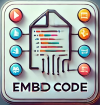About
The parallel-plate capacitor
A capacitor is a device for storing charge. In this simulation, you can investigate a relatively simple capacitor, known as a parallel-plate capacitor. It consists of two identical metal plates, placed parallel to one another. The capacitor can be charged by connecting one plate to the positive terminal of a battery and the other plate to the negative terminal. In this situation, the battery acts as a pump, pumping electrons from one capacitor plate to the other until the potential difference across the capacitor matches the battery voltage.
Activities
- Given the sliders and buttons available to you in the simulation, determine the maximum capacitance you can achieve in this simulation. The capacitance is defined to be C when the plates are 30 cm apart and the dielectric constant is 1.
- Given the sliders and buttons available to you in the simulation, determine the maximum potential difference across the plates that you can achieve in this simulation. The voltage of the battery is V.
- Given the sliders and buttons available to you in the simulation, determine the maximum charge that can be stored on the capacitor in this simulation. The charge stored on the capacitor is Q when the capacitance is C and the potential difference across it is V.
- Given the sliders and buttons available to you in the simulation, determine the maximum electric field between the plates that you can achieve in this simulation. The electric field has a magnitude of E when the capacitor voltage is V and the plates are 30 cm apart.
- Given the sliders and buttons available to you in the simulation, determine the maximum electrical energy that can be stored in the capacitor in this simulation. The energy is U when the charge stored is Q and when the capacitor voltage is V.
Translations
| Code | Language | Translator | Run | |
|---|---|---|---|---|
 |
||||
Credits


Andrew duffy; lookang; Coco
Sample Learning Goals
[text]
For Teachers
[text]
Research
[text]
Video
[text]
Version:
Other Resources
[text]
end faq
{accordionfaq faqid=accordion4 faqclass="lightnessfaq defaulticon headerbackground headerborder contentbackground contentborder round5"}
- Details
- Written by Coco Lee
- Parent Category: 05 Electricity and Magnetism
- Category: 01 Electric Field
- Hits: 4836








